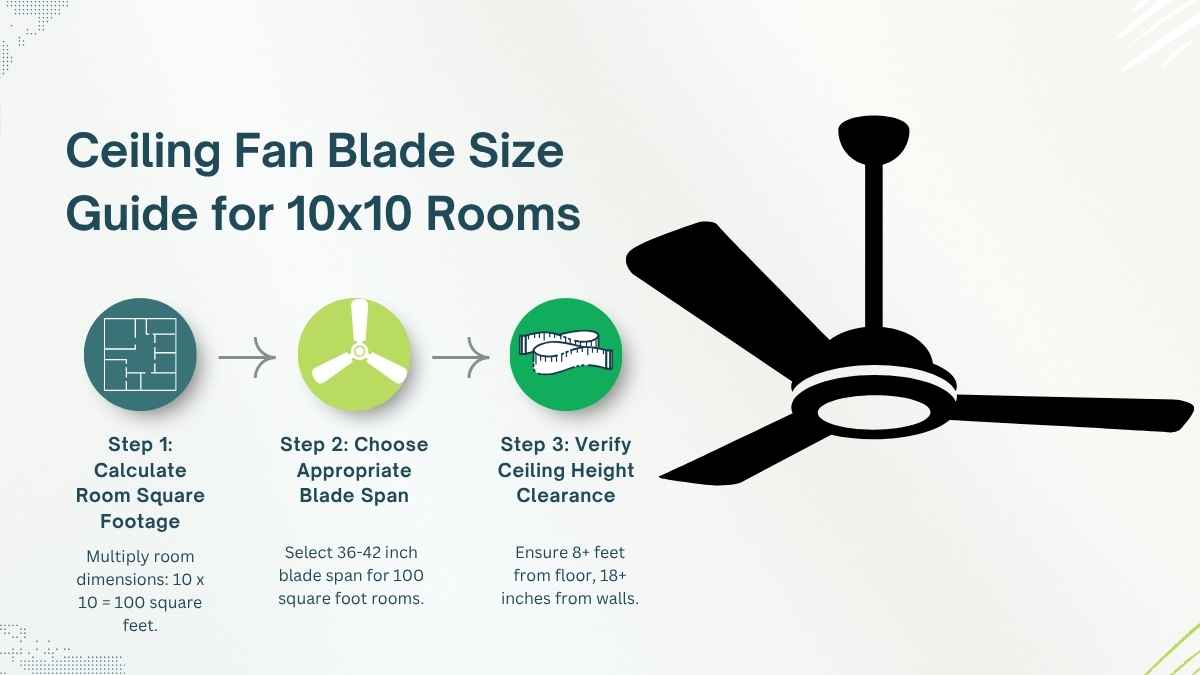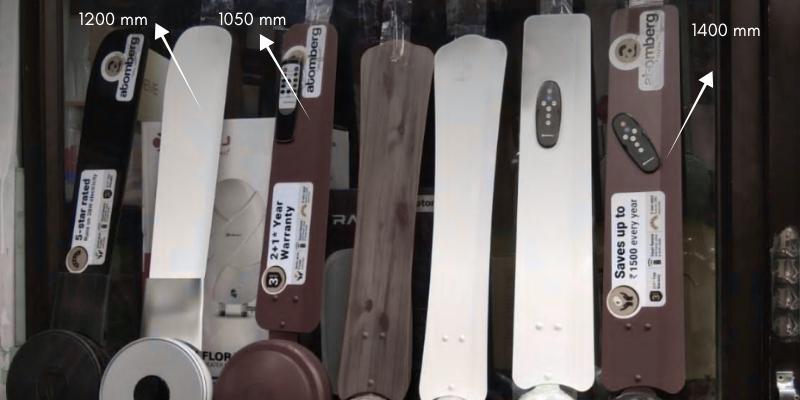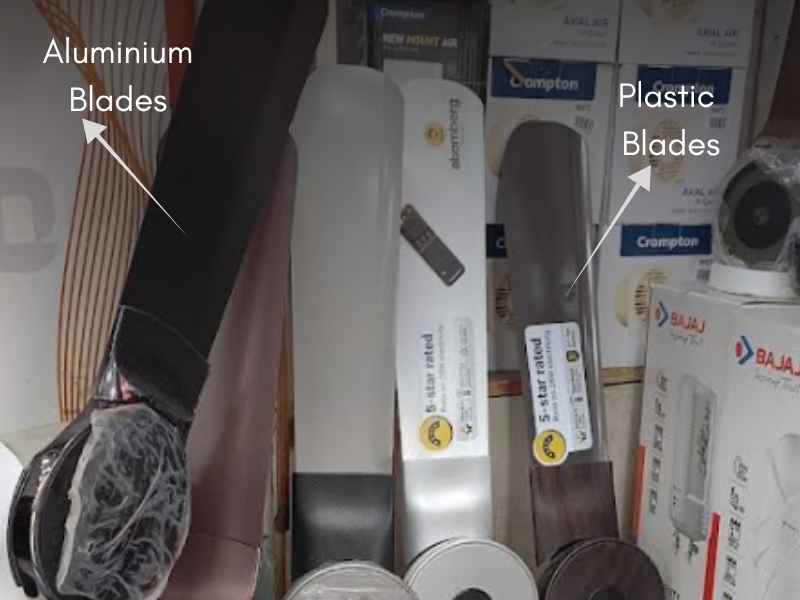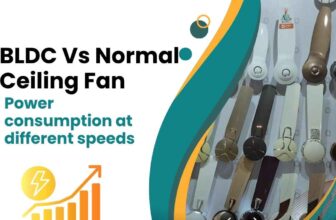
In our Silchar apartment, we had three 10×10 rooms where we struggled with air circulation for years. It was a game changer as now each room is comfortable throughout the day. We noticed during summer how the right blade size made a huge difference in air movement and reduced our dependence on air conditioning.
The blade size of the ceiling fan plays a big role in determining air circulation and comfort. Too small means insufficient air movement and thus stuffy, uncomfortable rooms that feel warmer than they actually are. So let’s explore the ideal blade sizes for 10×10 rooms, commonly available in India, price variations and how blade design affects performance.
Commonly Available Ceiling Fan Blade Sizes In India
Ceiling fan blade size is technically measured as the diameter of the circle created by the rotating blades. In India you get ceiling fans with blade sizes ranging from 900mm (36 inches) to 1400mm (56 inches), with the most common sizes being 1200mm (48 inches) and 1050mm (42 inches). The 1200mm fans have 4-5 blades and can move around 200-250 cubic meters of air per minute, while 1050mm variants move around 180-220 cubic meters per minute. So 1200mm size provides better air circulation for medium sized rooms.

Contrary to what we expect, blade size doesn’t make much difference in the price of the fan within the same brand. This is because motor specifications and build quality matters more than the extra material cost for larger blades. For example, the Havells Leganza with 1200mm (48 inches) blades costs around Rs. 3,500, while the one with 1050mm (42 inches) blades costs around Rs. 3,200. Similarly the Orient Electric Aeroquiet 1200mm model is priced at Rs. 2,800 compared to Rs. 2,600 for the 1050mm variant.
Blade Size and Room Coverage
Now you must be thinking which blade size is best for a 10×10 room (100 square feet). Fortunately, manufacturers themselves give a guideline for the same. Here it is-
| Room Size | Recommended Blade Size | Air Delivery (CMM) |
| 8×8 to 10×10 feet | 1050mm (42 inches) | 180-220 |
| 10×12 to 12×12 feet | 1200mm (48 inches) | 200-250 |
| 12×15 feet and above | 1400mm (56 inches) | 250-300 |
*Note: These are for standard 10-foot ceiling height and may vary based on room layout and ventilation.
Effect of Blade Design
Nowadays, ceiling fans with different blade designs are available in the market. There are two main categories- traditional flat blades and modern aerodynamic curved blades, each with its own performance characteristics. Traditional flat blades have a simple, straight design. They are economical and hence available across all price segments. So, they provide good air circulation at affordable prices. But they generate more noise. So they are good for utility areas, workshops and budget conscious installations.

Aerodynamic curved blades don’t create much turbulence during rotation. They don’t produce much noise either. But they are expensive due to advanced manufacturing process. So they are good for bedrooms, living rooms and spaces where quiet operation is required.


